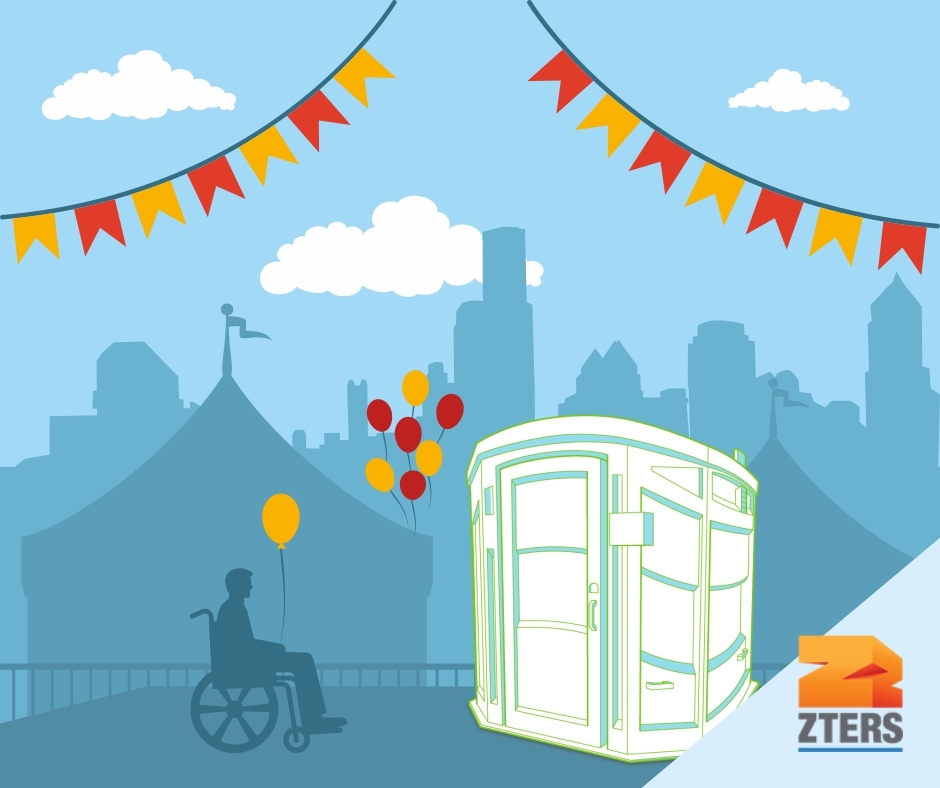Hosting a successful event involves careful planning. With so many moving parts, there is often one crucial aspect that is overlooked: accessibility.
Ensuring that your event is accessible to everyone, including individuals with disabilities, is not only a legal requirement but also a fundamental aspect of creating an inclusive and welcoming environment. Everyone deserves the opportunity to enjoy an event regardless of their level of ability.
We invite you to explore this event accessibility guide, which includes practical tips on making your event accessible.
Tips for a More Accessible Event
Ideally, an event planner will incorporate accessibility principles into the early stages of planning. But things don’t always work out like that and that’s okay. There are still plenty of ways to integrate accessibility into your event planning during the process.
1. Choose an Accessible Venue
Ensure your event venue is wheelchair accessible with ramps, elevators, and automatic doors (or leave them propped open). Also, confirm that parking spaces for individuals with disabilities are available and clearly marked.
These measures lay the foundation for a welcoming environment right from the start.
2. Establish Clear Pathways and Signage
Maintain clear pathways for easy navigation, free of obstacles. Additionally, use clear signage with easy-to-read fonts and high contrast for those with visual impairments. This not only aids individuals with mobility challenges but also ensures a seamless experience for all attendees.
If your event is outside — for instance, on a grassy field where there are small divots and bumps — it may be worthwhile to lay down a solid pathway so that wheelchair users can get around with ease.
3. Pay Attention to Seating Arrangements
Provide designated accessible seating areas with enough space for wheelchair users. When arranging seating, consider the needs of individuals with mobility challenges to enhance their overall event experience. This could mean having tables that are slightly lower.
4. Provide Accessible Restrooms
Prioritize the placement of ADA compliant portable toilets throughout the event venue. Make sure these restrooms are easily identifiable and marked with clear signage to meet the specific needs of attendees with disabilities.
Likewise, it’s important to ensure that you have the appropriate number of toilets on site. We’ve designed a portable toilet calculator to help you determine how many porta potties you need based on the number of attendees. Long bathroom lines aren’t fun for anyone.
5. Consider Dietary Restrictions
When planning your event’s menu, consider diverse dietary needs. Consider having at least one or two food items that are free from major allergens. Clearly label food items for allergens, and provide options for various dietary restrictions.
Ensure that food and beverage stations are accessible to all attendees, including those with mobility challenges. Something else to consider — especially at 21+ events — is providing non-alcoholic beverages aside from still water. Sparkling water, soda, fruit beverages, and even “mocktails” can be great options for people who don’t drink.
6. Prepare and Be Flexible to Accommodations
Part of being a great host is being flexible. While last-minute changes can sound stressful, be prepared to provide reasonable accommodations if requested. There may be aspects that you didn’t consider before, but it’s important to remain open to accessible changes so that everyone can enjoy their time.
More on ADA Compliant Portable Toilets
When it comes to providing accessible restroom facilities, ADA compliant portable toilets play a pivotal role. These specially designed units adhere to the Americans with Disabilities Act (ADA) standards, offering comfort and dignity to individuals with disabilities.
ADA compliant portable toilets are designed with wider entrances to accommodate wheelchairs. Inside, these units are equipped with grab bars and support rails positioned for ease of use by individuals with mobility challenges.
The spacious interiors provide users with ample room to navigate comfortably, and some units even offer additional space for caregivers if needed.
Need a Portable Toilet?
Speak with an account manager for a free quote.
Accessible handwashing stations, conveniently located near ADA compliant portable toilets, contribute to the overall accessibility of the event. These stations feature sinks at appropriate heights and easy-to-use faucets, ensuring that individuals with disabilities can maintain proper hygiene.
Proper signage is essential for directing attendees to ADA compliant portable toilets. Clearly mark the location of these facilities on event maps and signage, using universally recognized symbols for accessibility.
Here’s another great resource from Cornell University to check out, including an event accessibility checklist.
Conclusion: Accessible Events Make Memorable Events!
By prioritizing accessibility, you not only enhance the overall experience for all attendees but also demonstrate a commitment to inclusivity. Choosing ADA compliant portable toilets is a significant step towards creating an accessible event that welcomes everyone.
Remember, thoughtful planning ensures that everyone can enjoy your event to the fullest, leaving lasting positive impressions. Check out our other ZTERS posts for helpful event tips.
If there are any other services you need to ensure that your event is successful, give us a call. In addition to event portable toilet rentals, we also offer temporary fence rentals, dumpsters, and more.

